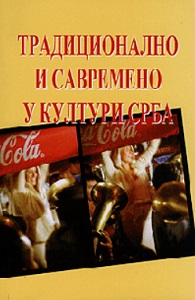Просторно-физичке и друштвене карактеристике панчевачког насеља Миса Виногради
Spatial/Physical and Social Features of the Pancevo Community “Misa Vinogradi”
Author(s): Gordana Gorunović
Subject(s): Anthropology, Policy, planning, forecast and speculation, Rural and urban sociology
Published by: Етнографски институт САНУ
Keywords: anthropology of urban planning; "wild" settlement; illegal construction; Pančevo; Serbia;
Summary/Abstract: This text is based on direct observations and authentic materials collected within the framework of a broader research program entitled: “The cultural identity of a suburb: living in the “New Misa” community of Pančevo” . The paper, first of all, provides data on the administrative affiliation, regional position, physical boundaries and traffic connections of this residential area to the other parts of town and its surroundings, then, on its urban-planning features, considered in a synchronic-diachronic perspective. This is followed by a survey of the community’s history, that is, of the major stages of colonization and urbanization of its territory, and by an attempt to draw an outline of its contemporary appearance and “ identity” through confronting regional plans made for it by experts with what has come about in practice and social reality. The residential area of “Misa Vinogradi” appertains to the subdistrict “Mladost”. It is located to the north-east of the town center, between the railway line and the road to Vršac. It belongs to the latter-day parts of town, whose emergence, expansion and urbanization were necessitated by the industrial development of Pančevo in the second half of the 20th century. Initially a small settlement in the then scarcely populated rural area, it emerged before the second world war, most probably for the needs of the workers employed at the “Outskirts” railway station. The settlement was founded on non-buildable agricultural land of erstwhile tilled fields, threshing floors, vinyards, and the town race-course. It has developed without a plan, through unauthorized construction, as an illegal homesteading for individual/family residential purposes. The process of its growth started in the post-war period, caused by the local, regional and inter-republic migrations of the population from the territory of Pančevo and its surroundings, from the other parts of Vojvodina, and from the republics of the former Yugoslavia - Bosnia-Herzegovina, Montenegro, Macedonia, and Croatia. The chief reasons for immigration were to get an employment, mainly in the industrial zone o f the town, and to solve the housing problem . The biggest influx of new settlers, accompanied by an upswing in the housing construction, came in the 1990s. The settlement first emerged as a subject of research and planning back in 1968, when this area, with some 2,500 inhabitants, w as still situated beyond the approved residential territory. A decision was passed to urbanize the existing “ shanty town” and to incorporate it into the county town. A right to become buildable, how ever, was granted it as late as 1973, with the enactment of the first detailed urbanization plan for this area. A complete and consistent implementation of this and of the other subsequent plans w as hampered by hard socio-economic circumstances and by the historic developmnets, so that, in reality, the trend of spontaneous, disorganized and illegal construction continued. The major portion of the town planners’ vision offered from the late 1960s through the 1970s and 1980s has remained on paper: removal of the railway track from the territory of the settlement, the gasification, the construction of the residential area auxiliary structures and of a complete traffic infrastructure, T& T network installations, etc. According to the town-planners and other experts, “Misa Vinogradi” was created as a bedroom community, and has largely remained so to this very day. Not with standing all this, as of today, it has a clear-cut “ identity” : a residential organization (mostly detached family houses), a physical-spatial and architectural character, and a reputation of being the “ community of the children and of the young”, “predominantly made up of young married couples and families”. According to the national structure and to the ethnic and regional origin of its dwellers, the settlement is a multi-ethnic mosaic - a situation typical of Vojvodina.
Book: Традиционално и савремено у култури Срба
- Page Range: 197-219
- Page Count: 23
- Publication Year: 2003
- Language: Serbian
- Content File-PDF

